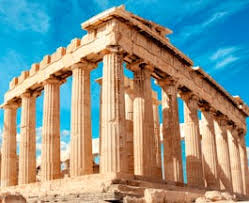Coursera Art History: Exploring the World of Art Through Online Learning
Art history enthusiasts and aspiring art scholars have a new avenue for deepening their understanding of artistic movements, styles, and masterpieces through Coursera’s Art History courses. Coursera, a renowned online learning platform, offers a diverse range of art history courses taught by leading experts in the field.
Whether you are intrigued by the Renaissance masters, fascinated by modern art movements, or curious about ancient civilizations’ artistic expressions, Coursera’s Art History courses provide a comprehensive exploration of art across different time periods and cultures.
Through engaging video lectures, interactive assignments, and curated readings, students can delve into the rich tapestry of human creativity and expression. From iconic paintings to architectural wonders, Coursera’s Art History courses offer a profound insight into the evolution of artistic traditions and the societal contexts that shaped them.
One of the key advantages of studying Art History on Coursera is the flexibility it offers. Students can access course materials at their own pace, allowing them to balance their learning with other commitments. Additionally, Coursera’s global community provides opportunities for students to connect with fellow art enthusiasts from around the world, fostering discussions and collaborations that enhance the learning experience.
Whether you are a seasoned art historian or a newcomer to the world of art appreciation, Coursera’s Art History courses offer a rewarding journey through centuries of artistic achievements. Explore diverse cultures, uncover hidden gems of art history, and develop a deeper appreciation for the beauty and complexity of human creativity with Coursera.
Common Questions About Coursera Art History Courses: Difficulty, Value, Study Tips, and Course Ease
- Is art history 101 hard?
- Are Coursera course certificates worth anything?
- How should I study for art history?
- Is art history an easy course?
Is art history 101 hard?
For many students considering delving into the world of art history, a common question that arises is, “Is art history 101 hard?” The difficulty level of Art History 101 courses can vary depending on individual interests, prior knowledge, and learning styles. While some may find certain concepts challenging to grasp initially, others may discover a newfound passion for the subject that makes the learning process engaging and rewarding. With dedication, curiosity, and a willingness to explore different artistic perspectives, students can navigate Art History 101 with enthusiasm and develop a deeper appreciation for the rich tapestry of human creativity throughout history.
Are Coursera course certificates worth anything?
One frequently asked question among learners exploring Coursera’s Art History courses is, “Are Coursera course certificates worth anything?” Coursera course certificates hold value in various ways. While they may not always be recognized as formal academic credentials, they do serve as tangible proof of completing a course and acquiring new skills and knowledge. Coursera certificates can be beneficial for showcasing professional development, enhancing resumes, and demonstrating a commitment to lifelong learning. Additionally, some employers and organizations may view Coursera certificates positively, especially when they align with the individual’s career goals or field of interest. Ultimately, the worth of a Coursera course certificate lies in how it is leveraged by the learner to advance their personal and professional growth.
How should I study for art history?
Studying art history effectively requires a combination of critical thinking, visual analysis, and historical context. To excel in art history courses on Coursera or any other platform, consider adopting a multi-faceted approach. Start by familiarizing yourself with key artistic movements, influential artists, and significant artworks within the course curriculum. Take detailed notes during lectures, pay attention to visual details in artworks, and explore supplementary readings to deepen your understanding. Engage in discussions with peers to gain different perspectives and interpretations of art. Visiting museums, galleries, or online exhibitions can also enhance your learning experience by providing real-world connections to the artworks studied. Lastly, practice active observation and reflection to develop your analytical skills and cultivate a deeper appreciation for the complexities of art history.
Is art history an easy course?
The question of whether art history is an easy course is a common inquiry among individuals considering delving into the subject. While the perception of difficulty can vary depending on personal interests and prior knowledge, art history is often regarded as a challenging yet rewarding field of study. The course requires critical thinking, analytical skills, and a willingness to engage with diverse artistic expressions across different time periods and cultures. Despite its complexity, many students find art history courses stimulating and enriching, offering a profound insight into human creativity and cultural evolution. Ultimately, the level of difficulty in art history courses can be influenced by individual dedication, passion for the subject, and willingness to explore the nuances of artistic interpretation.

